Part of a series of articles titled Preservation Matters.
Article
Preservation Matters: Disasters - Saving Wet Textiles After a Flood
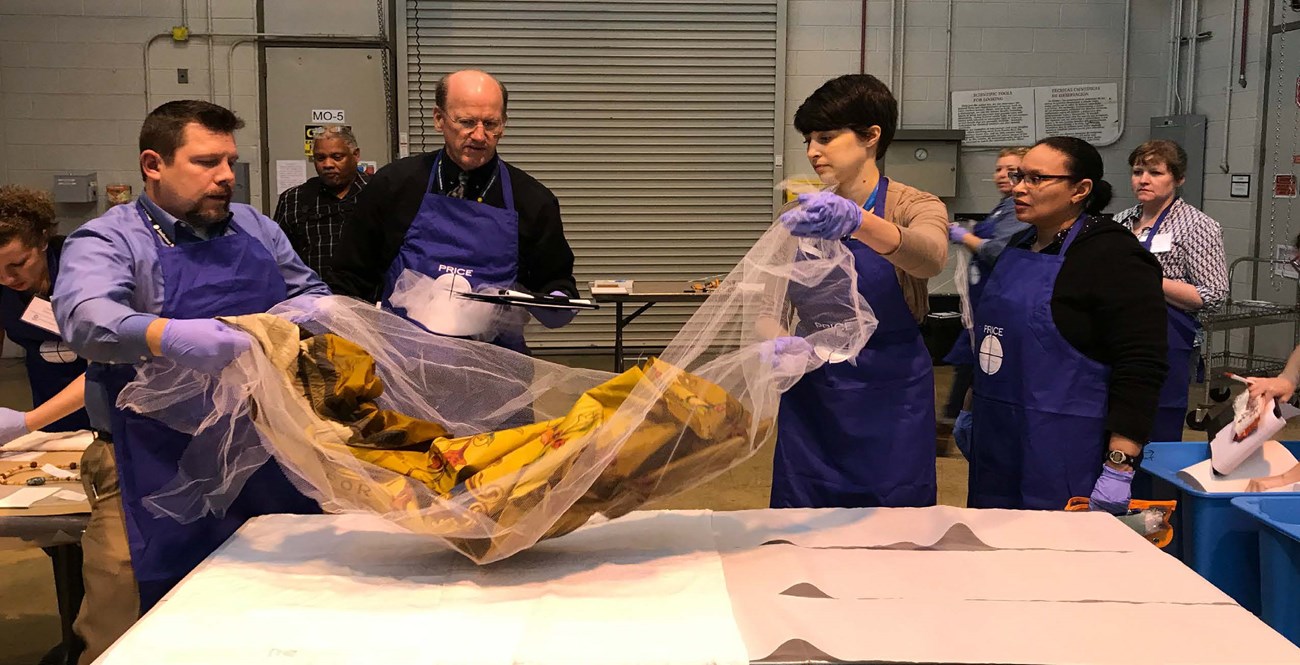
Flood waters damage the contents of a home, including special garments and essential items made of fabric. While everyday clothes can be laundered or dry cleaned, heirloom textiles require special handling. Heirloom textiles, such as wedding dresses, quilts, special garments, rugs, or draperies, may contain different types of fibers. Dry-cleaning can be used to clean some fibers (rayon, wool, and silks), while other threads (cottons or linens) can be gently hand-washed with a laundry detergent such as Woolite.
When dealing with flood damaged textiles, recognize that different materials will react differently when wet. Wet textiles may be more fragile or shrink or distort as they dry. Dyes can transfer from one fabric to another. In this document, preservation professionals offer general advice on how to salvage textiles after a flood event.
ASSESSING
Assess wet textiles to determine the course of action for salvage.
- Are the dyes stable? Will they run? Test the dyes using a cotton swab wetted with a soapy-water mixture. Run the wet cotton swab over the fabric and see if the dye transfers to the cotton swab. We recommend a preservation professional treat bleeding dyes.
- Do you know the fibers of the textile? Are they cotton, silk, wool, etc.? Minimize handling of fragile textiles such as silk.
- Are there any structural damage such as tears, splits, fabric losses, etc.? Carefully support any such areas when moving these textiles.
- Can you clean and dry your textiles within 48 hours? Take immediate action when possible.
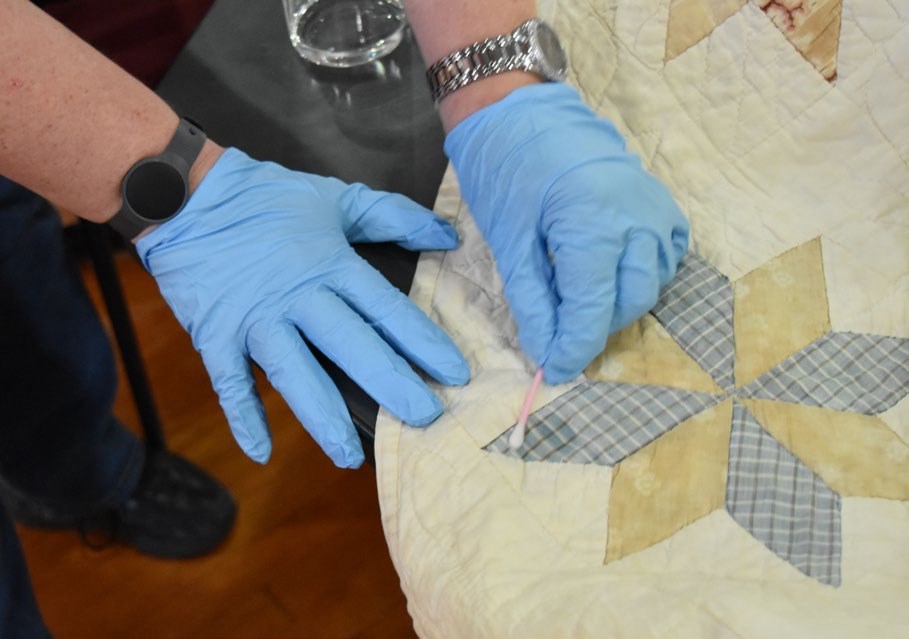
wetted with a soapy-water mixture. Run the
wet cotton swab over the fabric and see if the
dye transfers to the cotton swab.
HANDLING
Carefully handle wet textiles to protect the textile and yourself.
- Put on rubber gloves to handle the textiles, and wear a mask if contaminants or molds are present.
- Do not fold a textile that has bleeding dyes because colors will transfer from one side to the other.
- Fibers in heirloom quilts and garments can become fragile when wet. Special handling is necessary to prevent holes or tears.
- Textiles soak up water and become about 50% heavier than when they are dry. DO NOT pick up a wet textile by the corner without support.
- Support the textile from the underneath. Use your cupped hands to lift a small textile from the contaminated water. For larger items, a clean nylon window screen, a towel, a sheet, or a stretcher made from wood and canvas can be used to lift a quilt, rug, or drapery from the water.
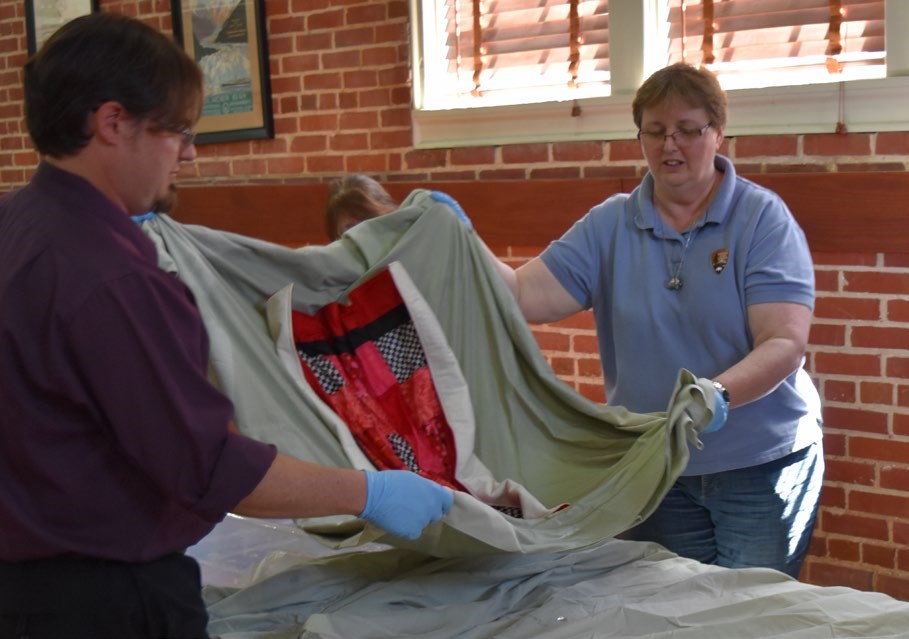
MATERIALS
Gather materials needed before beginning.
- Plastic drop cloths or sheets of plastic
- LOTS of clean towels or paper towels
- Support stretcher for larger items
- Large bin or basin
CLEANING
Carefully remove the textile from flood water using safe handling techniques and begin cleaning the fabric.
- Rinse dye fast textiles with clean water to remove dirt and debris.
- Rinse small items using a container of clean water.
- Often a bath tub is used to rinse large items. Alternately items can be rinsed using gently flowing clean water or with a fine hose spray.
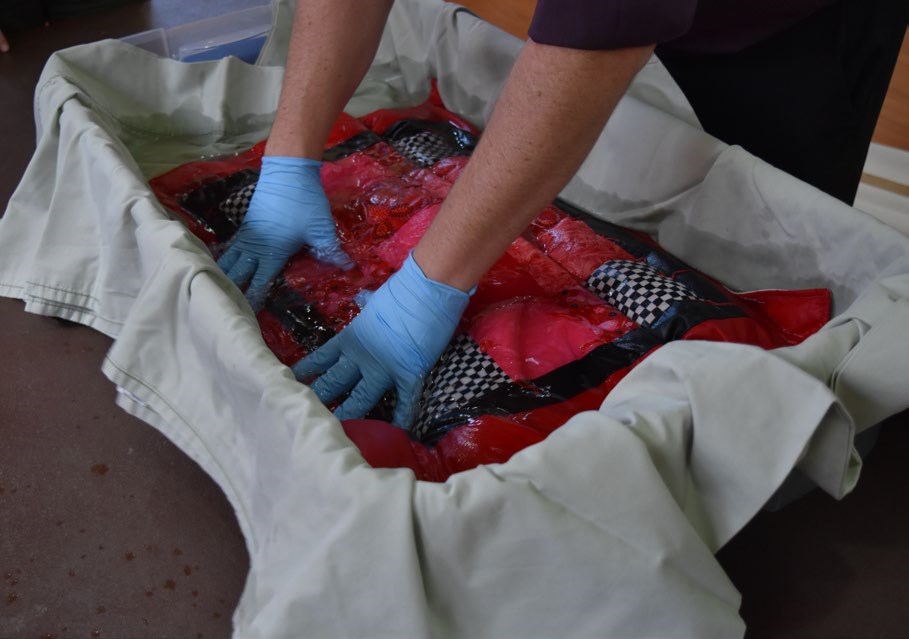
DRYING
Begin the drying process after all dirt and debris are removed from the fabric.
- Remove the textile from the clean rinse water using safe handling procedures.
- Gently press the excess water from the textile with the palm of your hand.
- Place the textile flat onto a clean cloth or polypropylene sheet.
- Blot the textile with another clean cloth or paper towel.
- Cover the textile with clean towels or sheets. The cover sheet will wick water and soiling away from the surface of the textile. Do not remove the cover cloth until the textile is dry.
- Allow the textile to air dry, preferably in a room with a dehumidifier or fan for air circulation to prevent mold.

CASE STUDY
A small heirloom textile is rinsed using gently flowing clean water from a fine hose spray. Photos courtesy of Karin von Lerber.
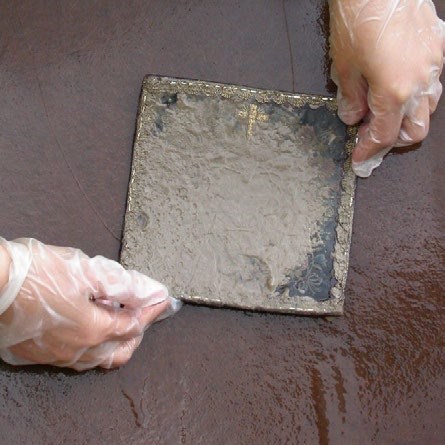
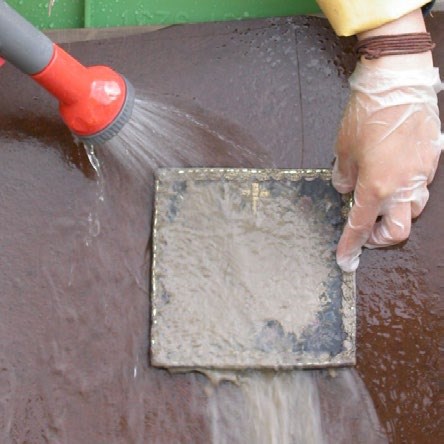
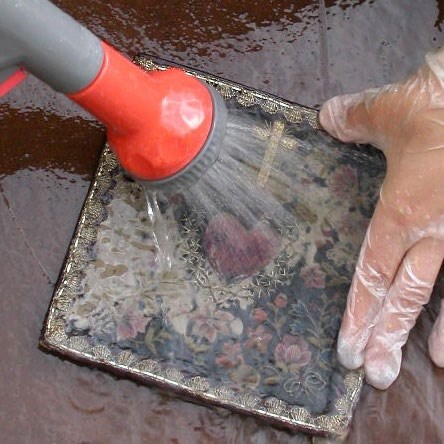
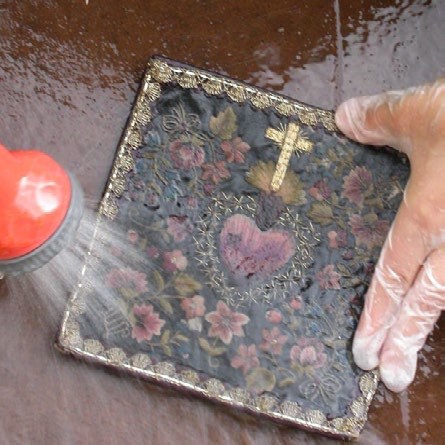
REFERENCES
- American Institute for Conservation, “Salvaging Water Damaged Textiles,” https://www.culturalheritage.org/docs/default-source/resources/emergency-resources/guides/salvaging-water-damaged-textiles. pdf.
- Museum Textile Services, “Emergency Salvage of Textiles and Clothing” http://www.museumtextiles.com/uploads/ 7/8/9/0/7890082/flood_recovery_ book_-_emergency_salvage_of_textiles.pdf.
- American Institute for Conservation, Find a Conservator, https://www.culturalheritage.org/about-conservation/find-a-conservator.
ABOUT NCPTT
The National Center for Preservation Technology and Training (NCPTT) is the leading research, technology and training center within the National Park Service.
NCPTT helps preservationists find better tools, better materials, and better approaches to conserving historic buildings and landscapes, archaeological sites, and museum collections. It conducts research and testing in its laboratories, provides cutting edge training around the U.S., and supports research and training projects at universities and nonprofits. NCPTT pushes the envelope of current preservation practice by exploring advances in science and technology in other fields and applying them to issues in cultural resource management.
NCPTT publishes its Preservation Matters Series to provide easily accessible guidelines for preserving cultural materials.
National Center for Preservation Technology and Training
645 University Parkway
Natchitoches, LA 71457
Website: www.nps.gov/ncptt
Phone: (318) 356-7444
Last updated: September 29, 2022
